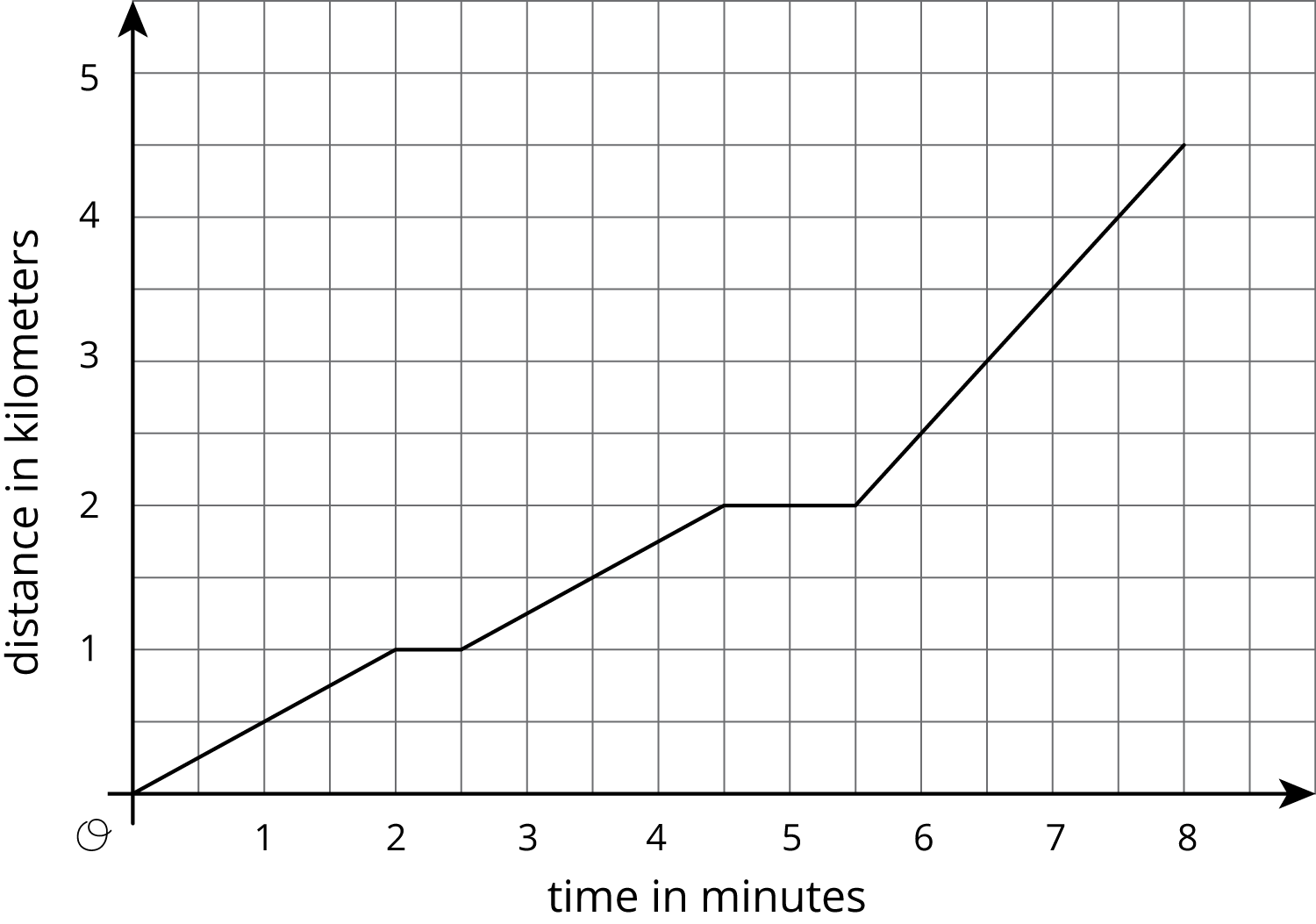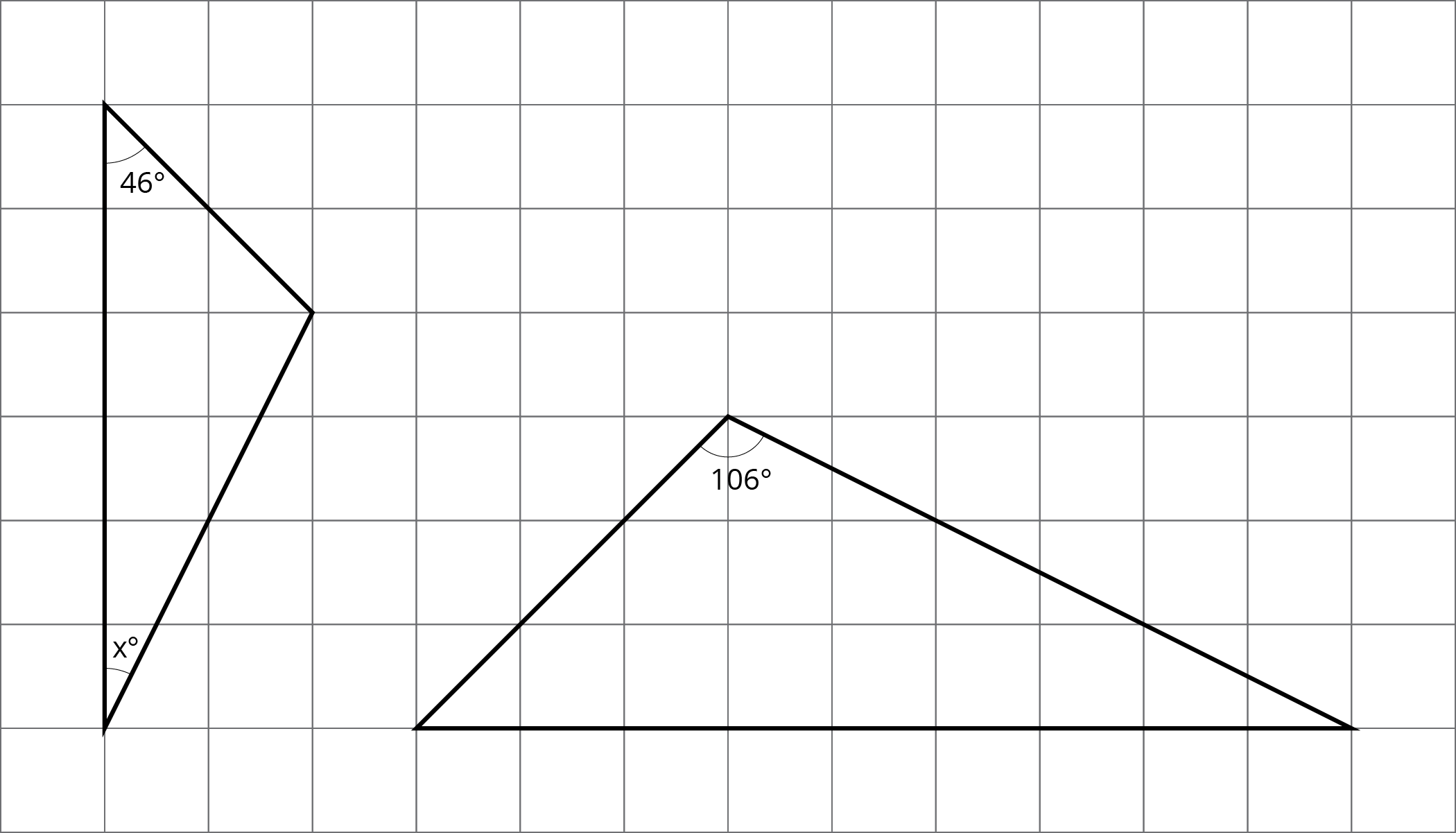Lesson 14
Adding and Subtracting with Scientific Notation
Let’s add and subtract using scientific notation to answer questions about animals and the solar system.
Problem 1
Evaluate each expression, giving the answer in scientific notation:
- \(5.3 \times 10^4 + 4.7 \times 10^4\)
- \(3.7 \times 10^6 - 3.3 \times 10^6\)
- \(4.8 \times 10^{\text-3} + 6.3 \times 10^{\text-3}\)
- \(6.6 \times 10^{\text-5} - 6.1 \times 10^{\text-5}\)
Problem 2
- Write a scenario that describes what is happening in the graph.
- What is happening at 5 minutes?
- What does the slope of the line between 6 and 8 minutes mean?

Problem 3
Apples cost $1 each. Oranges cost $2 each. You have $10 and want to buy 8 pieces of fruit. One graph shows combinations of apples and oranges that total to $10. The other graph shows combinations of apples and oranges that total to 8 pieces of fruit.

-
Name one combination of 8 fruits shown on the graph that whose cost does not total to $10.
-
Name one combination of fruits shown on the graph whose cost totals to $10 that are not 8 fruits all together.
-
How many apples and oranges would you need to have 8 fruits that cost $10 at the same time?
Problem 4
Solve each equation and check your solution.
\(\text-2(3x-4)=4(x+3)+6\)
\(\frac12(z+4)-6=\text-2z+8\)
\(4w-7=6w+31\)
Problem 5
Ecologists measure the body length and wingspan of 127 butterfly specimens caught in a single field.
- Draw a line that you think is a good fit for the data.
- Write an equation for the line.
- What does the slope of the line tell you about the wingspans and lengths of these butterflies?

Problem 6
The two triangles are similar. Find \(x\).
